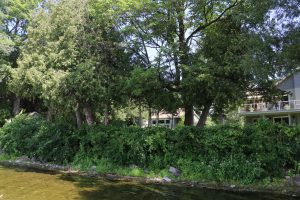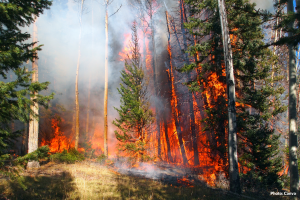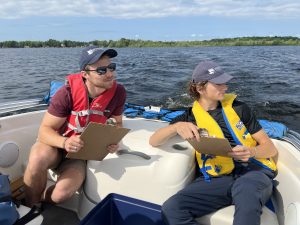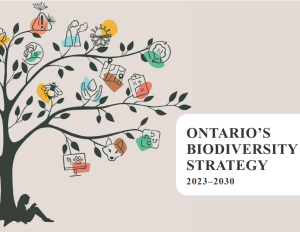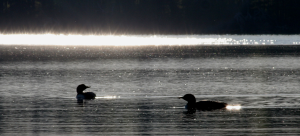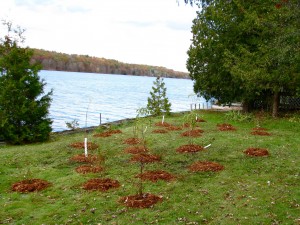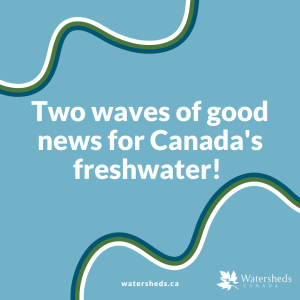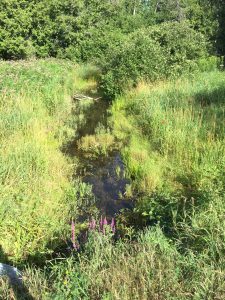by Alana Coulombe, Education programs administrator What does it mean to love your lake? Loving your lake as a place to enjoy swimming, fishing, boating, and exploring requires a commitment to care for and respect its natural wonders. You can love your lake in many different ways! As freshwater stewards, we can show our love and appreciation for lakes by enhancing and protecting their natural features. Despite being called "the water planet", more than 99% of Earth’s water is unusable by ... Read More
Building Wildfire Resilience to Reduce the Risk of Losses
by Alana Coulombe, Education programs administrator Canadians have experienced a devastating start to spring this year, with almost every province and territory being upturned by wildfires. Emergency Preparedness Minister Bill Blair recently announced nearly 440 fires have burned 3.9 million hectares of forest which is more than 13 times the 10-year average for this time of year (The Canadian Press, 2023). Wildfires can sometimes be a natural part of the ecosystem that contribute to forest ... Read More
News release – “Sustaining our Freshwater” pilot program enhances freshwater health in Municipalities of South Frontenac, Tweed
June 15, 2023 — Thanks to the “Sustaining Our Freshwater” project, the Municipalities of South Frontenac and Tweed will see lake health and shoreline environmental benefits for decades to come. This two-year pilot project led by Watersheds Canada, Quinte Conservation, Cataraqui Conservation, Dog & Cranberry Lakes Association, the Municipality of South Frontenac, the Municipality of Tweed, and Friends of Stoco Lake and local residents is restoring and sustainably naturalizing shorelines along ... Read More
Ontario Biodiversity Council welcomes Watersheds Canada
by Alana Coulombe, Education programs administrator Watersheds Canada is honoured to be accepted as a member of the Ontario Biodiversity Council! The Ontario Biodiversity Council was created in 2005 and represents conservation and environmental groups, industry associations, Indigenous organizations, natural history institutions, academia, and government agencies. Watersheds Canada and the Ontario Biodiversity Council recognize the importance of biodiversity and are taking steps to conserve ... Read More
Youth engagement and You
by Jane Pangilinan, Digital Engagement Technician Community involvement is important to building connections with nature. That is why the Ottawa Faith Community Capacity Building (OFCCB) initiative, a collaboration between Greening Sacred Spaces and Watersheds Canada, is made to connect 6 faith communities with the environment and with each other. Watersheds Canada and Greening Sacred Spaces is helping these communities bring an environmental project to life. In an effort to overcome ... Read More
Attention to detail
by Robert Pye, Executive Director, Watersheds Canada Nature art fills my home, a growing collection that started before I even owned four walls to display it. Framed wildlife prints by the talents of Carl Brenders and Michael Dumas, for example, were acquired in my starting-out days of paying rent and student loans. Many years later though, I have property where my taste in art imitates the wildlife that surrounds my country home. My most cherished work of nature art is a one-of-a-kind ... Read More
How to Soften a Shoreline Property
by Alana Coulombe, Education programs administrator As the interface between land and bodies of water, shorelines are essential for both humans and wildlife and must be protected against erosion and flooding. Historical means of shoreline protection consisted of hardened structures such as retaining walls made of concrete, steel, armour stone, gabion baskets, or wood. However, this shoreline armouring can have severe ecological and economic impacts with few short-term benefits. Recent studies ... Read More
How Native Plants Help with Erosion Control
by Jane Pangilinan, Digital Engagement Technician Erosion is a major problem for shorelines, agriculture, and freshwater areas. Erosion is a natural process that removes soil and also reduces specific aspects of the soil like its ability to retain water (Duran Zuazo & Rodriguez Pleguezuelo, 2008). Erosion affects the soil’s ability to grow food and can cause eroded land cover that can lead to severe land loss. Human impacts are known to accelerate erosion (Aziz & Islam, 2023) and ... Read More
News Release – Two waves of federal funding a signal of hope for Canada’s freshwater future
March 29, 2023 - Watersheds Canada is encouraged by the Government of Canada’s focus on freshwater health as announced in the new federal budget. First, it was announced there will be a Canadian government investment of $420 million over ten years to support the Great Lakes (announced last Friday), and second, a federal commitment to fund a new standalone Canada Water Agency. “The new federal funding is a critical first part of the solution as all freshwater leaders, including Watersheds ... Read More
This World Water Day, see the amazing fish habitat projects you have already helped complete!
This World Water Day, I want to introduce you to a place very special to me: Long Sault Creek. Because of individual donor support and local community groups, Long Sault Creek was transformed and restored. In total, 60 native tree species were planted, and as they grow, they will provide decades of shade along Long Sault Creek -- coldwater habitat for a naturally-reproducing population of brook trout. I went back to visit this creek last fall and was blown away by the growth of the native ... Read More
- « Previous Page
- 1
- …
- 10
- 11
- 12
- 13
- 14
- …
- 21
- Next Page »

